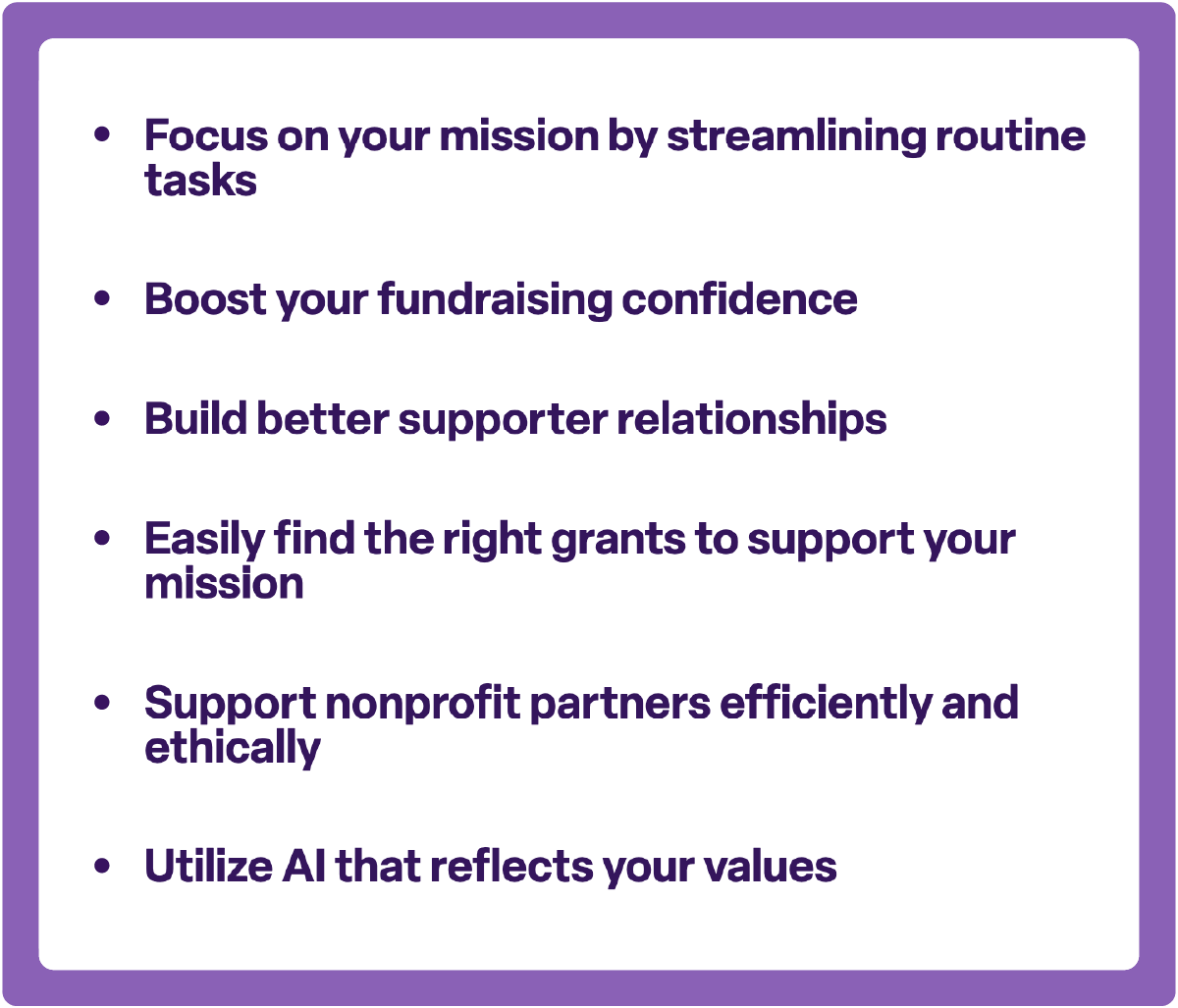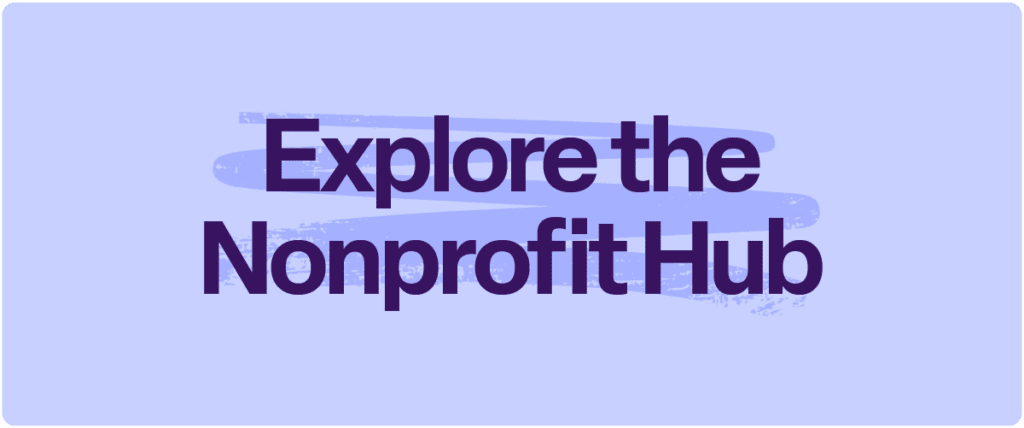How AI is unlocking new possibilities for nonprofits
Nonprofits face tighter budgets and higher demands. Discover how purpose-built AI can lighten the load and amplify impact.

A small nonprofit serving low-income students set out to win a $50,000 regional grant. The award promised to expand their after-school program into two new neighborhoods. But the grant application process felt like climbing uphill without a clear path. It demanded everything — detailed budgets, audited financials, and years of outcome data — layering request upon request until it became overwhelming. With only two staff members and no formal outcome tracking in place, the small organization simply couldn’t keep up. After weeks of scrambling, they managed to submit the application, only to learn it had been disqualified in the first round due to missing documentation.
Stories like this are all too common. Across the sector, small teams are doing extraordinary work with limited capacity and many are reaching a breaking point. A May 2025 survey found that more than half of nonprofit leaders cited insufficient funding to recruit, retain, and support staff as their biggest staffing challenge. Nonprofits face these issues every day. Budgets shrink while community needs grow and staff burnout climbs as funding cuts deepen. Many leaders describe the same tension: being asked to deliver more impact with fewer resources.
But now a new partner is available. Software tools designed specifically for the social good sector are integrating AI into workflows—not as a human replacement, but as a trusted partner. This guide will walk you through how AI is transforming grantseeking and the essentials of putting it into practice.
How AI empowers nonprofits to win more
The rise of artificial intelligence offers a new way forward. But for nonprofits, AI isn’t about replacing people. It’s about giving them time, focus, and capacity back.
Think of AI as a trusted teammate. It can take on heavy administrative work — researching opportunities, organizing data, drafting initial proposals — so staff can concentrate on strategy, storytelling, and relationships.
Unlike generic AI tools, purpose-built AI for nonprofits is trained on the data and language of the social good sector. It understands grant requirements, funder expectations, and mission-driven outcomes. It’s more than just a chatbot — it’s a collaborator that helps you work smarter, move faster, and secure more grants and funding.
Nonprofits can use AI to do more with less
AI becomes truly valuable when used intentionally. Here’s how nonprofits can put it to work today:
1. Streamline your research.
AI can analyze thousands of funding databases in minutes and match opportunities to your organization’s mission and geography. Instead of spending hours searching for leads, you can start with a list of strong, relevant options, freeing time to focus on applications that matter most.
2. Strengthen your proposals.
AI can organize data, structure drafts, and align your messaging with a funder’s priorities. That doesn’t mean handing over your voice; It means getting a solid first draft that your team can refine with authenticity and impact.
3. Build capacity without burnout.
The greatest benefit of AI isn’t just speed; it’s expanded capacity. When used well, AI can help small teams operate like larger ones by automating repetitive tasks and eliminating administrative bottlenecks. These tools give staff more time and clarity to focus on mission-driven work instead of manual tasks.
As nonprofits begin adopting AI across their workflows, it’s essential to establish guidelines that keep its use thoughtful and transparent.
Using AI responsibly
As with any technology, responsible use is key. AI should enhance human creativity, not replace it.
Nonprofits can build trust and confidence with these simple best practices:
- Always review and fact-check generated content.
- Avoid inputting sensitive financial or donor data.
- Document when and how AI is used in public materials.
- Offer team training to ensure consistency and comfort.
When used ethically and transparently, AI becomes an extension of your team’s expertise, not a threat to it.
Bonterra Que is AI for the social good sector
At Bonterra, we build technology that elevates human potential. That’s the foundation of Bonterra Que, our AI engine purpose-built for nonprofits and the social good ecosystem.
Unlike public AI tools, Bonterra Que is trained exclusively on nonprofit and social impact data. It understands how funders think, how nonprofits operate, and what language inspires connection. Bonterra Que fuels every Bonterra product, from fundraising to grant management, helping teams work smarter and faster while staying true to their mission.

The takeaway
AI won’t replace your mission; it will reinforce it. It lightens the load, restores capacity, and makes it possible for small teams to achieve big outcomes. In our 2025 Impact Report, we discovered that 63% of grantseekers stop applying after one rejection, even though over half of those who try again eventually succeed. For small nonprofits, tools like Bonterra Que can mean the difference between giving up and growing impact.
With the right support, your team can find more opportunities, craft stronger proposals, and spend less time on paperwork and more time winning grants and changing lives.
Ready to execute faster, work smarter, and raise more with less effort?

Work with Bonterra



